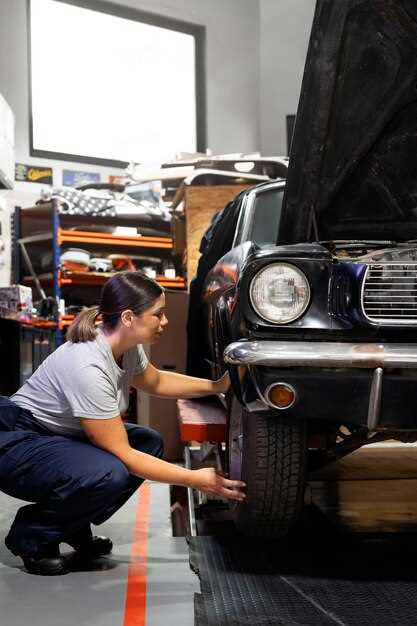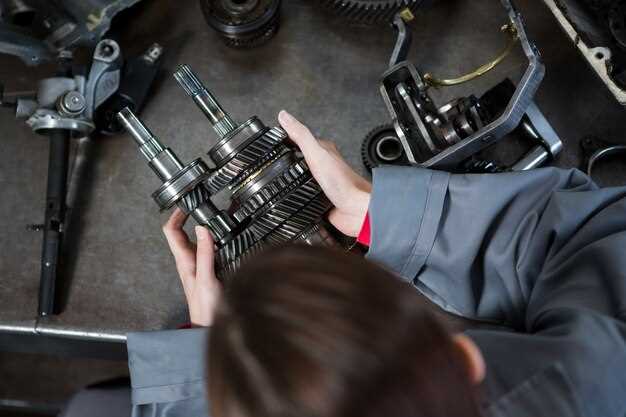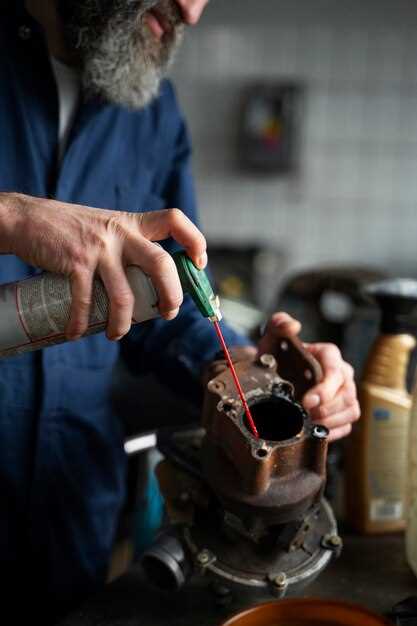
The allure of classic cars often lies in their timeless design and nostalgic charm. However, many enthusiasts recognize that the original suspension systems in these vehicles can be lacking when it comes to modern performance standards. Upgrading the suspension not only enhances ride quality but also significantly improves handling and safety, enabling classic cars to perform more competitively on both the road and the track.
Modern driving demands have evolved, and so have the technologies and materials used in suspension design. Classic car owners can benefit from incorporating modern suspension components, such as coilovers, sway bars, and upgraded shock absorbers. These enhancements provide greater stability, reduced body roll, and improved responsiveness, allowing drivers to enjoy a more dynamic driving experience while maintaining the character of their vintage vehicles.
In this article, we will explore various options for upgrading suspension systems on classic cars, discussing the advantages of each approach. We’ll delve into the importance of balance between aesthetics and performance, helping enthusiasts make informed decisions that not only elevate their car’s capabilities but also preserve its classic essence. Whether you’re a seasoned gearhead or a newcomer to the world of classic automobiles, upgrading the suspension can be a rewarding investment in both performance and enjoyment.
Choosing the Right Type of Suspension for Your Classic Car
Selecting the appropriate suspension for your classic car is essential for enhancing its performance, handling, and ride quality. The right choice can significantly affect how your car feels on the road, especially during turns and at high speeds. Here are key factors to consider when making your decision:
- Driving Style: Determine how you plan to use your classic car. If your focus is on daily driving, a softer suspension may be appropriate for comfort. For more spirited driving or track use, a stiffer suspension will provide better handling.
- Type of Suspension: There are several suspension types to consider:
- Leaf Spring: Traditionally used in classic cars, excellent for load-bearing but may limit performance.
- Coil Spring: Offers better handling and ride quality, well-suited for performance upgrades.
- Air Suspension: Provides adjustable ride height and comfort, ideal for custom builds.
- Independent Suspension: Enhances handling by allowing each wheel to move independently, offering a smoother ride.
- Vehicle Weight: Consider the overall weight of your classic car. Heavier cars may benefit from heavier-duty suspension components, while lighter vehicles may require a more delicate setup to avoid excessive stiffness.
- Compatibility: Ensure that the chosen suspension system is compatible with other components of your vehicle. Research specific kits designed for your classic car model to maintain optimal performance.
- Budget: Set a clear budget for your suspension upgrade. Higher-quality components and full systems can be costly, but they often provide better longevity and improved performance.
- Installation Difficulty: Assess your mechanical skills or the need for professional installation. Some suspension upgrades might require advanced knowledge or tools.
By carefully considering these factors, you can select the right suspension system that enhances both the performance and enjoyment of your classic car while ensuring safe and reliable operation on the road.
Step-by-Step Guide to Installing Coilovers on Vintage Models

Upgrading your classic car’s suspension with coilovers can significantly enhance handling and ride quality. Follow this step-by-step guide to successfully install coilovers on vintage models.
Tools and Materials Needed:
- Coilover kit specific to your vintage model
- Jack and jack stands
- Tire iron
- Socket set
- Torque wrench
- Screwdriver set
- Pliers
- Spring compressor (if required)
Step 1: Prepare the Vehicle
Firstly, park the vehicle on a level surface and engage the parking brake. Loosen the lug nuts on the front wheels before raising the car with a jack. Secure it with jack stands for safety.
Step 2: Remove the Wheels
Once the car is securely elevated, remove the loosened lug nuts and take off the wheels to access the suspension components.
Step 3: Remove Old Shock Absorbers
Locate the shock absorbers and detach them from the vehicle. This usually involves removing bolts from both the top and bottom mount. Some vintage models may require removing additional components such as sway bars or brackets for full access.
Step 4: Remove Springs (If Necessary)
If your coilover kit includes new springs, you might need to remove the old springs. Use a spring compressor to safely compress and detach the old springs from the shock assembly. If your coilovers are pre-assembled, skip this step.
Step 5: Install Coilovers
Begin the installation by positioning the coilovers in the mounting location. Ensure they are properly oriented based on design specifications. Attach the top mount securely using the original bolts or new hardware, ensuring a snug fit.
Step 6: Adjust Height Settings
Before securing all components, set the desired ride height on the coilovers. Adjust the perch height according to your preference, as coilovers often allow for customization. Check for any manufacturer specifications regarding optimal settings.
Step 7: Reattach Suspension Components
Reattach any components removed during the shock absorber removal. Ensure all bolts are tightened according to manufacturer’s torque specifications. Check that everything is aligned correctly and functions smoothly.
Step 8: Replace Wheels
Once the coilovers are secured, replace the wheels onto the hub. Hand-tighten the lug nuts to ensure they are initially seated properly.
Step 9: Lower the Vehicle
Carefully lower the vehicle back to the ground using the jack. Once the car is back on solid ground, use a torque wrench to tighten the lug nuts to the recommended specifications.
Step 10: Test and Adjust
After installation, take the car for a test drive in a safe area. Pay attention to the suspension’s performance and comfort. Make any necessary adjustments to the coilover settings based on your driving experience.
Installing coilovers can dramatically improve your vintage car’s handling. With the right tools and techniques, you’ll enjoy a revamped driving experience that combines modern performance with classic style.
Tuning Your Suspension Settings for Optimal Handling and Comfort

Tuning your suspension is crucial for enhancing both the handling and comfort of classic cars. The goal is to strike a balance between responsiveness and ride quality. Key elements to consider include damping, spring rates, and alignment settings.
Damping settings directly influence how your vehicle absorbs bumps and responds to inputs. Adjustable shock absorbers allow you to configure both rebound and compression settings. Start with a baseline adjustment and test the ride quality. Increasing damping can improve control during cornering, while softer settings can enhance comfort on rough surfaces.
Spring rates affect vehicle height and weight distribution. Stiffer springs provide better handling but may compromise comfort on uneven roads. Conversely, softer springs can enhance ride quality but might lead to excessive body roll during aggressive driving. When selecting springs, consider the vehicle’s intended use–street driving, track, or a combination of both.
Another important aspect is alignment settings. The proper alignment can significantly affect tire wear and handling characteristics. Ensure your camber, caster, and toe are set according to manufacturer specifications or performance requirements. A slight negative camber can improve cornering grip, while proper toe alignment enhances straight-line stability.
Finally, consistently test and refine your settings. Take your vehicle for a drive after each adjustment to gauge improvements in both handling and comfort. Document your changes to identify what works best for your specific classic car setup.
